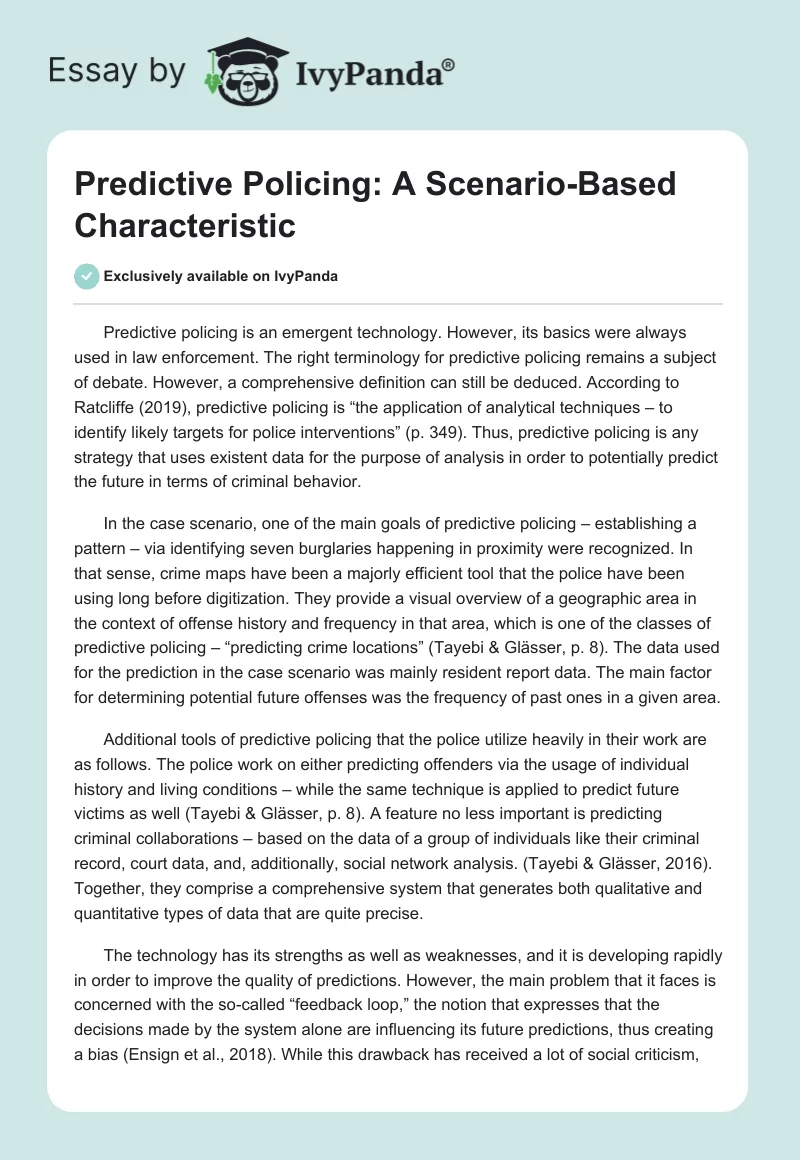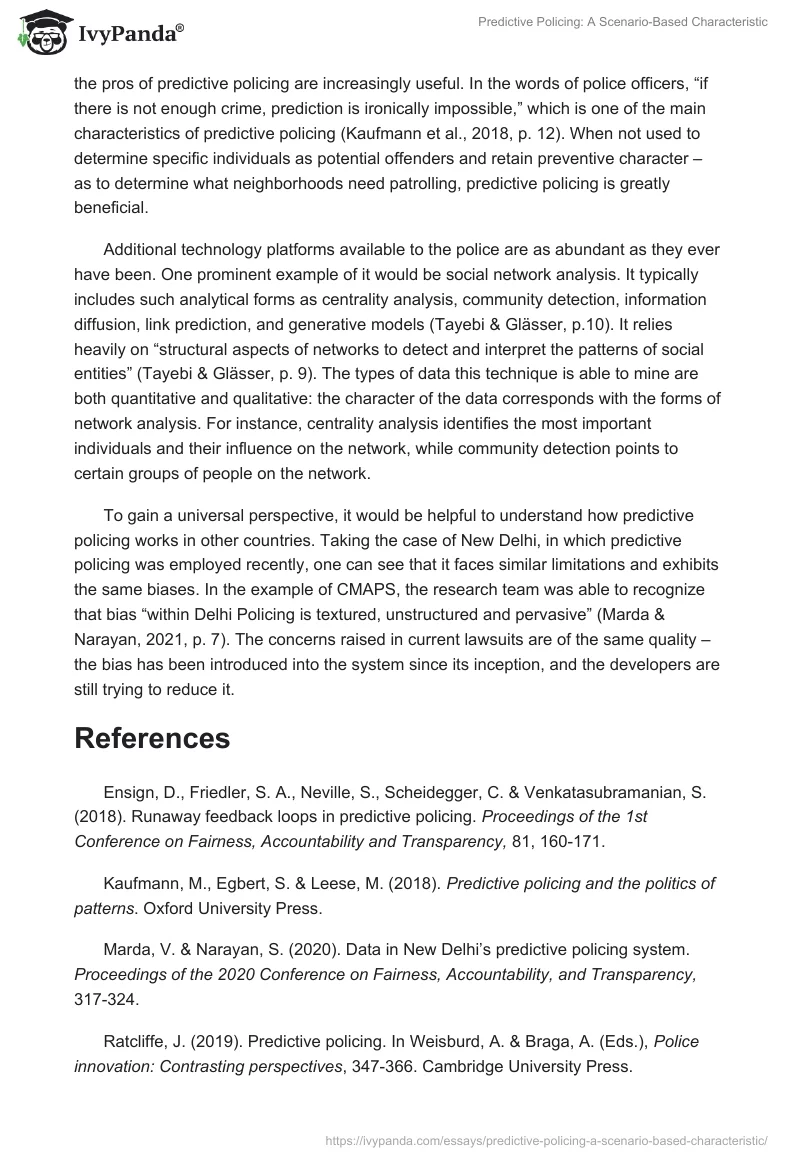Predictive policing is an emergent technology. However, its basics were always used in law enforcement. The right terminology for predictive policing remains a subject of debate. However, a comprehensive definition can still be deduced. According to Ratcliffe (2019), predictive policing is “the application of analytical techniques – to identify likely targets for police interventions” (p. 349). Thus, predictive policing is any strategy that uses existent data for the purpose of analysis in order to potentially predict the future in terms of criminal behavior.
In the case scenario, one of the main goals of predictive policing – establishing a pattern – via identifying seven burglaries happening in proximity were recognized. In that sense, crime maps have been a majorly efficient tool that the police have been using long before digitization. They provide a visual overview of a geographic area in the context of offense history and frequency in that area, which is one of the classes of predictive policing – “predicting crime locations” (Tayebi & Glässer, p. 8). The data used for the prediction in the case scenario was mainly resident report data. The main factor for determining potential future offenses was the frequency of past ones in a given area.
Additional tools of predictive policing that the police utilize heavily in their work are as follows. The police work on either predicting offenders via the usage of individual history and living conditions – while the same technique is applied to predict future victims as well (Tayebi & Glässer, p. 8). A feature no less important is predicting criminal collaborations – based on the data of a group of individuals like their criminal record, court data, and, additionally, social network analysis. (Tayebi & Glässer, 2016). Together, they comprise a comprehensive system that generates both qualitative and quantitative types of data that are quite precise.
The technology has its strengths as well as weaknesses, and it is developing rapidly in order to improve the quality of predictions. However, the main problem that it faces is concerned with the so-called “feedback loop,” the notion that expresses that the decisions made by the system alone are influencing its future predictions, thus creating a bias (Ensign et al., 2018). While this drawback has received a lot of social criticism, the pros of predictive policing are increasingly useful. In the words of police officers, “if there is not enough crime, prediction is ironically impossible,” which is one of the main characteristics of predictive policing (Kaufmann et al., 2018, p. 12). When not used to determine specific individuals as potential offenders and retain preventive character – as to determine what neighborhoods need patrolling, predictive policing is greatly beneficial.
Additional technology platforms available to the police are as abundant as they ever have been. One prominent example of it would be social network analysis. It typically includes such analytical forms as centrality analysis, community detection, information diffusion, link prediction, and generative models (Tayebi & Glässer, p.10). It relies heavily on “structural aspects of networks to detect and interpret the patterns of social entities” (Tayebi & Glässer, p. 9). The types of data this technique is able to mine are both quantitative and qualitative: the character of the data corresponds with the forms of network analysis. For instance, centrality analysis identifies the most important individuals and their influence on the network, while community detection points to certain groups of people on the network.
To gain a universal perspective, it would be helpful to understand how predictive policing works in other countries. Taking the case of New Delhi, in which predictive policing was employed recently, one can see that it faces similar limitations and exhibits the same biases. In the example of CMAPS, the research team was able to recognize that bias “within Delhi Policing is textured, unstructured and pervasive” (Marda & Narayan, 2021, p. 7). The concerns raised in current lawsuits are of the same quality – the bias has been introduced into the system since its inception, and the developers are still trying to reduce it.
References
Ensign, D., Friedler, S. A., Neville, S., Scheidegger, C. & Venkatasubramanian, S. (2018). Runaway feedback loops in predictive policing. Proceedings of the 1st Conference on Fairness, Accountability and Transparency, 81, 160-171.
Kaufmann, M., Egbert, S. & Leese, M. (2018). Predictive policing and the politics of patterns. Oxford University Press.
Marda, V. & Narayan, S. (2020). Data in New Delhi’s predictive policing system. Proceedings of the 2020 Conference on Fairness, Accountability, and Transparency, 317-324.
Ratcliffe, J. (2019). Predictive policing. In Weisburd, A. & Braga, A. (Eds.), Police innovation: Contrasting perspectives, 347-366. Cambridge University Press.
Tayebi, M. & Glässer, U. (2016). Social Network Analysis in Predictive Policing. In Lecture notes and social networks, 7-14. Springer.


